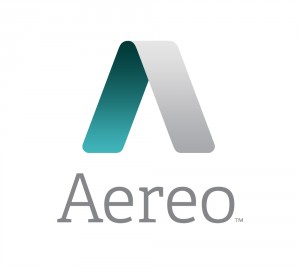 Aereo will face off with broadcasters next week in the U.S. Supreme Court over the legality of the online video provider’s business plan — using dime-sized individual antennas to receive over-the-air local stations and stream them to paying subscribers over the Internet.
Aereo will face off with broadcasters next week in the U.S. Supreme Court over the legality of the online video provider’s business plan — using dime-sized individual antennas to receive over-the-air local stations and stream them to paying subscribers over the Internet.
On April 22, Aereo will appeal for its future as it presents its case to the high court in defense of a consumer’s right to access local stations over the air, even if a third-party installs an antenna on their behalf.
Broadcasters consider Aereo just another end run around copyright law, arguing the online service has no right to profit off the resale of their signals to consumers without permission and compensation.
Today Aereo launched a website, ProtectMyAntenna.org that frames its legal case as a basic viewing rights issue. Aereo says the broadcasters’ intransigence is nothing new — they also fought cable television and the videocassette recorder in the courts in the past, suggesting both technologies were stealing their signals.
 “What is at stake in this case is much bigger than Aereo,” says the website. “We believe that consumers are entitled to use a modern, cloud-based, version of an antenna and DVR and that consumers should not be constrained to 1950’s era technology to watch free-to-air broadcast television. The broadcasters’ positions in this case, if sustained, would impair cloud innovation and threaten the myriad benefits to individuals, companies, and the economy at large of the advances in cloud computing and cloud storage.”
“What is at stake in this case is much bigger than Aereo,” says the website. “We believe that consumers are entitled to use a modern, cloud-based, version of an antenna and DVR and that consumers should not be constrained to 1950’s era technology to watch free-to-air broadcast television. The broadcasters’ positions in this case, if sustained, would impair cloud innovation and threaten the myriad benefits to individuals, companies, and the economy at large of the advances in cloud computing and cloud storage.”
The Obama Administration has sided with the broadcasters and is seeking time to speak before the Court on the broadcasters’ behalf. Consumer groups are largely lined up behind Aereo, claiming online video competition is something worth protecting.
The crux of the case is likely to be which side is correct in their interpretation of what defines a “public performance,” which makes all the difference in determining whether Aereo must pay broadcasters or not. Private viewing at home is protected by earlier case-law and if Aereo is found to simply be facilitating home viewing, it will likely be deemed legal. Aereo assigns a single antenna to each customer, a fact they hope will strengthen its argument they are not redistributing programming to the masses. How the signal gets to the customer, over an antenna cable or the Internet, should not make any difference.
Broadcasters are hoping for a different interpretation — one popular in California courts, that would find any redistribution of programming over the Internet to be a public performance. Several other ventures have tried to launch virtual cable systems that streamed over the air stations and all were quickly shut down by west coast courts. Aereo has better lawyers, deeper pockets, and apparently a better argument that won favor in several eastern U.S. courts last year.
The Supreme Court will ultimately decide Aereo’s fate. If it loses, expect it to close down operations immediately. If Aereo wins, the company expects to continue expanding into other television markets across the country.
Aereo currently provides service in 11 U.S. cities.
[flv]http://www.phillipdampier.com/video/Yahoo Aereo CEO Chet Kanojia on the Future of TV 4-17-14.flv[/flv]
Katie Couric from Yahoo! News sat down for an extensive interview about Aereo with its CEO Chet Kanojia. Kanojia argues broadcasters were already well-compensated when they received free spectrum for their stations. (20:20)


 Subscribe
Subscribe
Phil, I thought this was an appeal by the Broadcasters to overturn a lower court ruling in favor of Aereo. No? They just need a draw, or 4-4, to win. Although one of the Justice’s own Daughter has submitted a brief on behalf of the broadcasters, so they really need to win a majority of 7 remaining votes. Funny that no one is focusing on this 3rd world aspect of our legal system. I knew politicians could be bought, but a SC vote?
If broadcasters get what they are asking for it could be the beginning of the end for OTA TV. Broadcasters get licenses to provide a public service. The truth, however, is most of the viewers and even more of the revenue come from people who watch on cable. The broadcast license, plus a network affiliate relationship that brings valuable content, is then used to earn retransmission fees from cable operators, an act of circumvention worthy of Aereo itself. Hardly anybody watches OTA TV because it is not engineered to work; the broadcast industry chose a standard that doesn’t support single-frequency… Read more »
Paul, there are tons of ironies and tragedies in this topic; even dating back 70 and 100 years ago. But perhaps the bigger one is the impact on the auction of broadcast spectrum as we speak. Michael